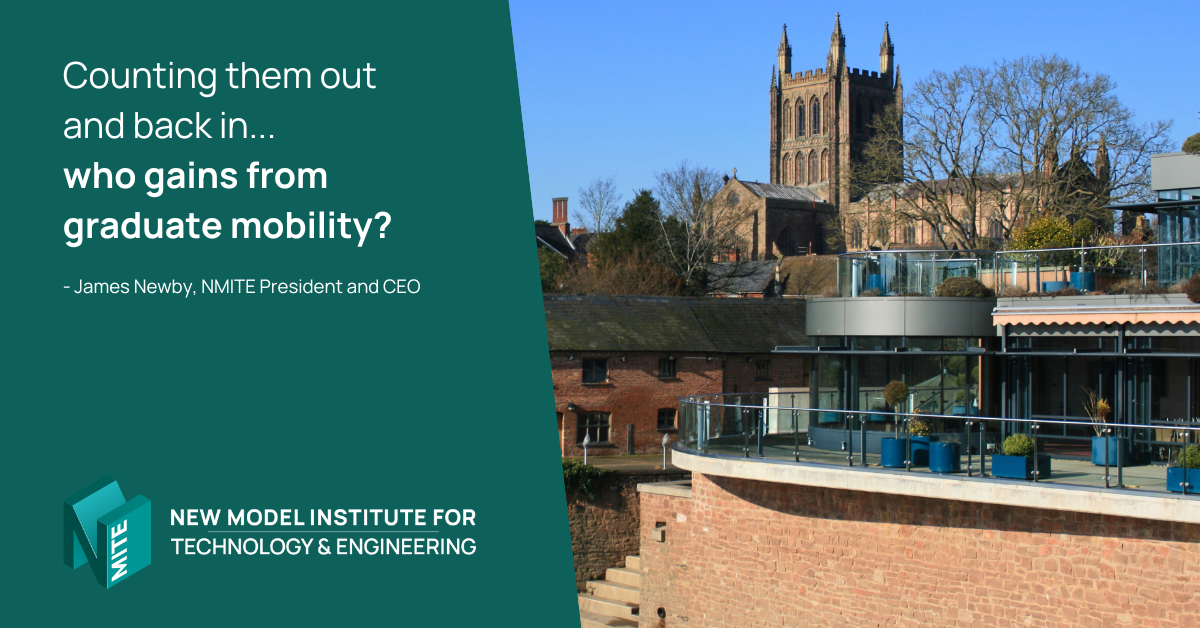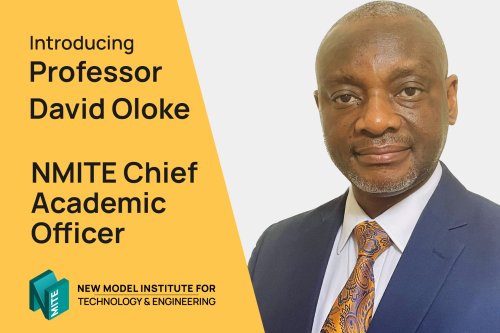
One important characteristic of young people with a university degree is that they are more mobile than other groups, something we in the Higher Education sector call 'graduate mobility'. They can move to where the opportunities are, and they often end up living in a completely different part of the country from the one they grew up in.
This is not (necessarily) a bad thing – young people chasing opportunities, seeking economic security and professional fulfilment is something we all want for our children, and for those growing up in our communities. When Tony Blair set his famous target of sending 50% of the nation’s young people to university in the 2000s, that became a political promise with one highly unusual feature. It was kept. He envisaged economic growth fuelled by this new army of graduates ready to deploy the skills that employers in an increasingly knowledge-based economy needed.
This mobility contributes directly to the uneven spread of economic activity across the country. Graduates go where the graduate jobs are and, once there, they help drive the economic progress that attracts still more graduates. Economic activity and inward investment then tends to concentrate in the already affluent regions of the country, leaving other areas left behind. The hot zones get hotter, and the cold zones get colder. The UK’s “Golden Triangle,” the section of the country with the cities of Oxford, Cambridge and London placed at the three angles of a triangle is a good example of this. Already the wealthiest part of the country, it sucks in most of the new inward investment, generates most of the new high-tech start-ups and attracts most of the country’s graduates. It also hosts some of the world’s most reputable universities.
It is an economic hot zone, and our county, Herefordshire, is decidedly chilly in comparison.
Many of our local employers complain that they can’t find the employees they need with the right skills. I also often hear the view expressed that too many young people are encouraged to go to university and more should be steered towards vocational training instead. The vocational route better prepares them for work and avoids much of the cost and time taken to complete a university degree. I don’t agree with this view but I do understand it. Too many graduates leave university ill-equipped to meet the needs of employers, their university education takes too long and costs too much. Having to leave your hometown to study for a degree is a barrier for many that is simply too difficult to overcome. More “work-ready” university graduates are needed, especially in science, engineering and technology subjects, and reform of the existing university system, including the introduction of new models for teaching to degree level is well overdue. I write about this in more detail in my previous blog.
The key issue for a county like ours, in my view, is not how many of our young people go on to gain a university degree, it is where they end up. If we invest in producing more graduates of our own, will we simply be fuelling the continued economic growth of that golden triangle? Will our own employers still struggle to find the skilled graduates they need?
The Office for National Statistics (ONS) recently published a new set of data which has been widely reported in the press. The data provides insights into this graduate mobility, showing how many graduates a city or region produces and where they end up living. The data provides useful evidence for people like me who work in Higher Education but, more importantly, for those with responsibility for, or an interest in, the economic progress of a place. That means it is relevant to just about everybody. I have crunched the numbers from the new data set for the City of Hereford and they throw up one or two surprises.
First, a quick explanation of the data. The ONS has taken the number of the students studying at GCSE level in a place and this forms the base data against which all other data points can be compared. Their database then allows users to extract data to determine the proportion of this GCSE population who go on to study for a degree, and whether they end up living in the place where they sat their GCSEs. We can now determine how many young people from Hereford go on to become graduates and whether the city ends up with more or fewer graduates than it produces.
Let’s start with the statistics that tell the story we would probably expect. Hereford produces far fewer graduates from its young people than most other areas of the UK. 27% of its GCSE students go on to become university graduates. This is well short of that famous 50% target and is evidence of the uneven distribution of graduates across the country. Areas in the Golden Triangle achieve figures as high as 70%. From now on I will refer to those Hereford GCSE students who go on to achieve a degree as “homegrown graduates.”
Do you have to get away to get ahead?
So how many of these homegrown graduates end up living in Hereford and contributing to the local economy? The figure for the difference between the number of homegrown graduates produced and the number ending up living in Hereford is also well below national averages. The city ends up with 21% fewer graduates than it produces. We know that graduates are mobile, we know they often move to chase graduate-level opportunities, and we know that most of these opportunities exist in the economic hot zones elsewhere. Talent is everywhere, but opportunities are not. So far, so expected.
This must mean that our homegrown graduates simply move away from the city and set up their lives somewhere else, right?
Actually, it doesn’t, and that is the main surprise in the data.

True enough, many homegrown graduates do move away as we’d expect.
In fact, nearly half of them. 52% of them end up living in Hereford after graduation, and the rest end up building their futures somewhere else. But this compares to a national average of 55% staying in their hometown after graduation, which is only slightly higher. So, the expectation (or myth) that most young people, once qualified to take those better-paid jobs in the knowledge economy elsewhere, will leave the county and never return turns out to be wrong. Hereford’s homegrown graduates are almost as likely to stay as they are to leave, and that means the city is better at retaining its homegrown talent than many of us might think.
If homegrown graduates are not taking flight in droves, then why does the city end up with fewer graduates than it produces? The answer to this is in the final statistic I will include. The number of people growing up and graduating elsewhere and moving into the city. That figure is only 7% of the base population. Our problem is not that we can’t keep hold of the graduates we produce, it is that we don’t attract in anything like enough to replace those that we do lose.
The figures for the county’s other towns vary slightly but tell the same story. Leominster, for example, ends up with 38% fewer graduates than it produces, Ledbury ends up with -28%. The picture for similar-sized towns and cities in other counties with relatively small, local universities is completely different. Lincoln, a cathedral city a similar size to Hereford and also a long way from the wealthiest parts of the country ends up with a whopping 80% more graduates than it produces. Worcester, our nearest neighbouring university town, ends up with 25% more.
The statistics highlight both the problem and the opportunity we face. On the downside, we don’t have enough skilled graduates to drive the economic growth the county needs and we struggle to attract them into the county from elsewhere. The recent focus on building new infrastructure, fuelled by the county’s success in attracting “Levelling Up” money from central government will help, but we all know that economic growth and inward investment is driven by knowledge and skills.
People matter much more than roads and buildings.
The good news is that the opportunity is enormous. The county now has a university of its own and so can produce more homegrown graduates and attract more young people from those GCSE cohorts in other places to study for a degree here. If we do, we can now be confident that many - around half - could stay and build their lives here. The building blocks for this are already in place. Hereford is the home to excellent 6th form and technical colleges, outstandingly good training providers and an excellent independent Art College. NMITE has now joined the fray and is adding to this educational ecosystem a lower cost but high-quality route to a STEM degree and a professional future. Our institution offers a new model of Higher Education which combines the academic rigour of a traditional university with the practical skills needed by our employers. Nearly half of our students grew up locally so are gaining their degrees without having to leave the county.
They are Herefordshire’s new generation of homegrown graduate engineers.
It will take time, and a continued commitment from policymakers, employers and education providers, to build the educational opportunities our young people need to secure their futures and to support the economic regeneration of the county. But this new data set confirms that the investment and commitment is worth it and will pay huge dividends. Those growing up in Hereford can now access a range of opportunities, vocational, academic, and on-the-job training – they all matter. What is most important is that they can learn their skills here, on their doorstep.
I don’t know the answer to the question of how many young people should study for a degree and whether Tony Blair was right to set a target of 50%. But I do know this, the number from Hereford should be much higher than it is now. Levelling Up our county should not rely entirely on central government grants; we can do much of it ourselves.
-James Newby, President and CEO at NMITE





